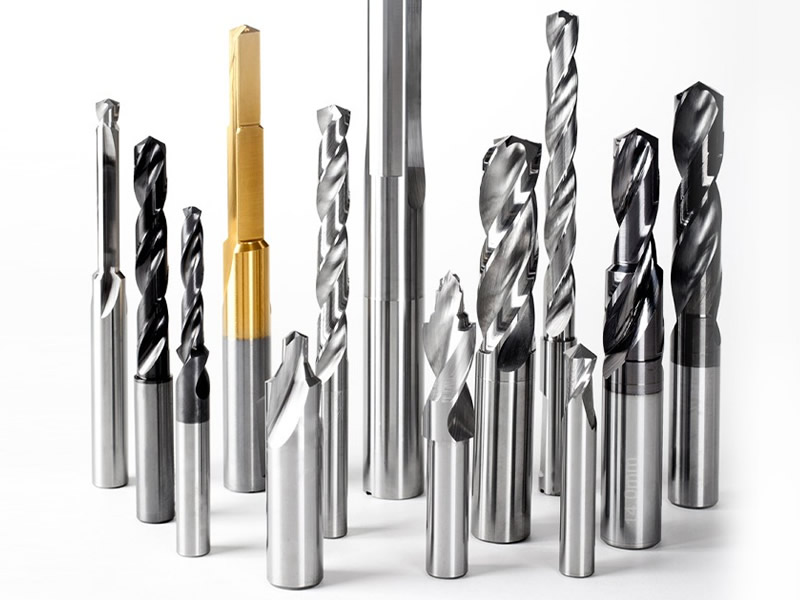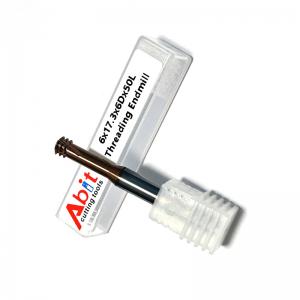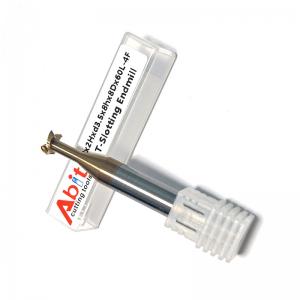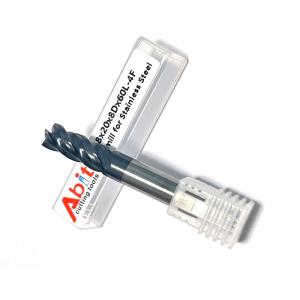Carbide milling cutter selection
Except for end mills and some end mills and cemented carbide as milling cutter materials for milling stainless steel, all other types of milling cutters are made of high-speed steel, especially tungsten-molybdenum and high-vanadium high-speed steel, which have good effects and can improve the tool durability by 1 to 2 times compared with W18Cr4V. The cemented carbide grades suitable for making stainless steel milling cutters are YG8, YW2, 813, 798, YS2T, YS30, YS25, etc.
The spray cooling method has the most significant effect and can improve the durability of the milling cutter by more than double; if the general 10% emulsion is used for cooling, the cutting fluid flow should be ensured to achieve sufficient cooling. When using cemented carbide milling cutters to mill stainless steel, Vc=70~150m/min, Vf=37.5~150mm/min, and appropriate adjustments should be made according to the alloy grade and workpiece material.
Stainless steel has strong adhesion and melting properties, and chips easily adhere to the milling cutter blade, which worsens the cutting conditions; when reverse milling, the blade first slides on the hardened surface, increasing the tendency of work hardening; the impact and vibration during milling are large, which makes the milling cutter blade easy to break and wear.
When milling stainless steel, the cutting edge must be sharp and able to withstand impact, and the chip groove must be large. A large helix angle milling cutter (cylindrical milling cutter, end milling cutter) can be used. The helix angle b increases from 20° to 45° (gn=5°), and the tool durability can be increased by more than 2 times, because at this time the working front angle g0e of the milling cutter increases from 11° to more than 27°, and milling is light. However, the b value should not be larger, especially for end mills, b≤35° is appropriate, so as not to weaken the cutter teeth.
The use of corrugated edge end mills to process stainless steel pipes or thin-walled parts is light and fast, with little vibration, fragile chips, and no deformation of the workpiece. Good results can be achieved by high-speed milling with carbide end mills and milling stainless steel with indexable end mills.
Milling 1Cr18Ni9Ti with silver-white chip end mills, with geometric parameters of gf=5°, gp=15°, af=15°, ap=5°, kr=55°, k′r=35°, g01=-30°, bg=0.4mm, re=6mm, when Vc=50~90m/min, Vf=630~750mm/min, a′p=2~6mm and feed per tooth reaches 0.4~0.8mm, the milling force is reduced by 10%~15%, the milling power is reduced by 44%, and the efficiency is greatly improved. The principle is to grind a negative chamfer on the main cutting edge, and artificially generate a built-up edge during milling, so that it replaces the cutting edge for cutting. The front angle gb of the built-up edge can reach 20~~302. Due to the effect of the main deflection angle, the built-up edge is subjected to a thrust parallel to the cutting edge generated on the front cutting edge and becomes a secondary chip outflow, thereby taking away the cutting heat and reducing the cutting temperature.
When milling stainless steel, the down milling method should be used as much as possible. The asymmetric down milling method can ensure that the cutting edge is smoothly cut off from the metal, and the chip bonding contact area is small. It is easy to be thrown off under the action of high-speed centrifugal force, so as to avoid the chip impacting the front cutting edge when the cutter teeth re-cut into the workpiece, resulting in peeling and chipping, thereby improving the durability of the tool.
Stainless steel materials are widely used and can be encountered in turning, milling, drilling, and tapping. However, because stainless steel has different characteristics from other general materials, processing stainless steel has become a big problem for technicians!




















